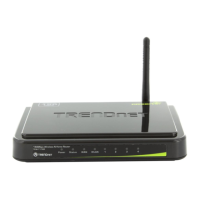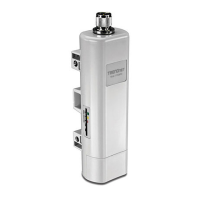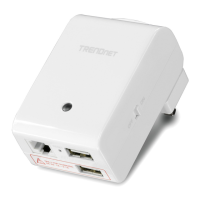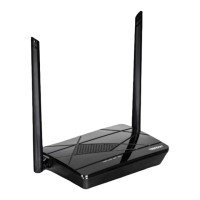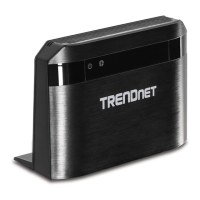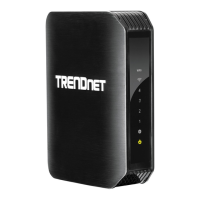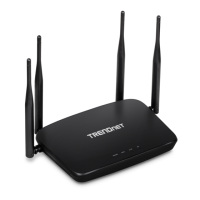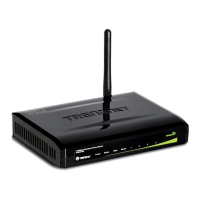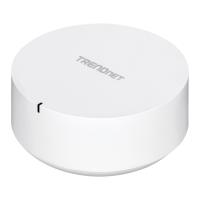© Copyright 2013 TRENDnet. All Rights Reserved.
TRENDnet User’s Guide
TEW-718BRM
56
Restart your router
Maintenance > Reboot Device
You may want to restart your router if you are encountering difficulties with your router
and have attempted all other troubleshooting.
There are two methods that can be used to restart your router.
• Turn the router off disconnect the power adapter from the rear panel of your
router for 10 seconds and reconnect the power adapter, see “Product
Hardware Features” on page 2
.
Use this method if you are encountering difficulties with accessing your router
management page. This is also known as a hard reboot or power cycle.
OR
• Router Management Page – This is also known as a soft reboot or restart.
1. Log into your router management page (see “Access your router management page”
on page 35
).
2. Click on Maintenance, and click on Reboot Device. If prompted, click yes or OK.
3. Click Reboot to restart the router. If prompted, click yes or OK.
Check connectivity using the router management page
Maintenance > Ping
For troubleshooting purposes, you may want to check your router connectivity using the
ping (also known as a network connectivity test) test tool on your router management
page.
1. Log into your router management page (see “Access your router management page”
on page 35
).
2. Click on Maintenance, and click on Ping.
3. Next to Domain Name or IP address for Ping Test, enter in the IP address (e.g.
192.168.10.101) or host name (e.g. www.trendnet.com) to test and click Ping.
4. You will receive a success or fail result message of the address you entered providing
a basic indicating of the router’s connectivity to the Internet or devices that are
connected to your network.
5. You will receive a success or fail result message of the address you entered providing
a basic indicating of the router’s connectivity to the Internet or devices that are
connected to your network. Click Back to bring you back to the Ping Test page.
6. Click Apply at the bottom of the page to save the domain name or IP address.
Note: In addition, you can run an ADSL diagnostic connectivity test under Maintenance >
Diagnostics.

